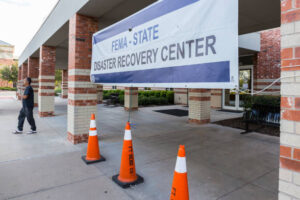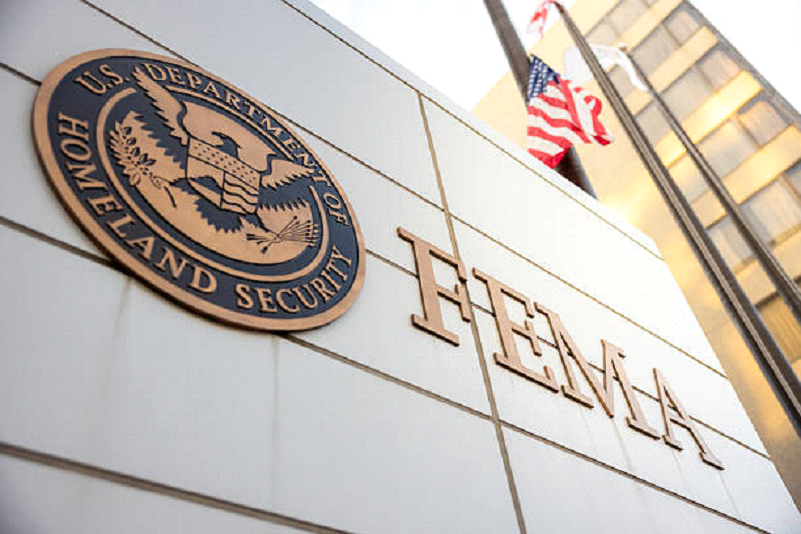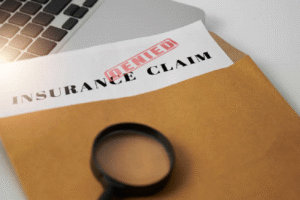When it comes to protecting your home, you likely already have homeowners insurance. It’s the go-to option for covering a wide range of damages and losses. But what if disaster strikes—say, a massive flood or a natural catastrophe? Is your standard homeowners insurance enough to protect your home, or is there something else you need?
That’s where FEMA and its National Flood Insurance Program (NFIP) come in. You’ve probably heard of FEMA (Federal Emergency Management Agency) in the news, especially after major disasters. But what does FEMA really do, and how does it differ from the standard home insurance coverage you might already have?
In this post, we’ll break down the key differences between FEMA and home insurance, discuss how these two types of coverage work together, and help you figure out what you really need to protect your home.
What Is Homeowners Insurance and What Does It Cover?
Now, let’s talk about your standard homeowners insurance. This is the policy you likely have in place right now to protect your home, personal property, and liability in case of certain events.
Homeowners insurance typically covers:
-
Dwelling Coverage: Protection for your home’s structure (roof, walls, foundation, etc.) if it’s damaged by fire, vandalism, windstorm, or a list of other covered events.
-
Personal Property: Coverage for your personal belongings, such as furniture, electronics, clothes, and jewelry, in the event of theft, damage, or loss.
-
Liability: Protection if someone is injured on your property and sues you. This covers legal fees and potential damages.
-
Additional Living Expenses (ALE): If your home is damaged and you’re forced to live elsewhere, this portion of your policy covers temporary living expenses like hotel stays.
However, there are important exclusions in a standard homeowners insurance policy. For example, floods, earthquakes, and certain types of water damage (like sewer backups) are not covered by typical home insurance.

What is FEMA and What Does It Do?
Let’s start with the basics: what exactly is FEMA?
FEMA is a federal agency that provides assistance and emergency management services in the event of a disaster. It’s best known for stepping in when things go south—whether that’s a hurricane, wildfire, earthquake, or another catastrophic event.
When a disaster strikes, FEMA offers several types of help:
-
Disaster assistance grants to individuals and households
-
Loans for homeowners and businesses to repair or replace damaged property
-
Public assistance to state and local governments to help repair infrastructure
One of FEMA’s key offerings is the National Flood Insurance Program (NFIP), which provides flood insurance for homeowners, renters, and businesses, often in areas that are at high risk for flooding.
FEMA’s role is to help people recover after a disaster. However, it’s important to remember that FEMA assistance typically doesn’t cover every type of loss, and it often has limitations.
FEMA vs. Home Insurance: Key Differences
At first glance, FEMA and home insurance might seem like they’re the same thing. Both are designed to help homeowners in times of disaster, but there are significant differences in what they cover and when they come into play.
1. Coverage Types
As we mentioned, homeowners insurance covers a range of damages caused by things like fire, theft, and certain weather events. But it won’t cover everything.
For example, flood insurance is usually a separate policy provided by FEMA through the NFIP. Most standard home insurance policies don’t cover flood damage unless you’ve purchased additional flood insurance.
Other types of coverage, like earthquake insurance, may also require a separate policy, depending on where you live. For instance, if you live in California or another earthquake-prone area, you might need to purchase earthquake coverage separately from your home insurance.
2. Disaster Assistance vs. Insurance
FEMA provides disaster relief and financial assistance, but this is generally not the same as insurance. In most cases, FEMA’s assistance won’t fully cover the costs of repairing or replacing your home or belongings.
-
FEMA Assistance: It’s designed to provide immediate financial help in the aftermath of a disaster. FEMA grants and loans help homeowners with basic recovery needs like temporary housing and repairs. However, these funds are often limited and may not fully replace all losses.
-
Homeowners Insurance: Insurance policies are designed to provide more comprehensive and ongoing protection. They help pay for repairs, replacements, and medical expenses resulting from covered events. Insurance can often cover a larger percentage of damages than FEMA’s relief programs.
| Feature | Homeowners Insurance | FEMA Disaster Assistance |
|---|---|---|
| Type of Coverage | Private insurance policy | Federal disaster aid |
| Payout Amount | Based on your coverage limits | Limited, usually up to ~$42,500 (2024) |
| Personal Property Coverage | Yes | Limited or none |
| Premiums Required | Yes (monthly or annual) | No premiums, but requires disaster declaration |
| Guaranteed After Disaster | Yes, if event covered by policy | No, subject to federal approval |
| Flood Damage Covered | No, separate flood policy needed | Sometimes limited help post-disaster |

How FEMA and Homeowners Insurance Work Together
It’s important to understand that FEMA and homeowners insurance are separate systems, but they can work together in some cases. Here’s how:
-
Flooding and Other Natural Disasters: If your home is damaged by something that’s covered by both your insurance and FEMA (like a hurricane), you can file claims with both your homeowners insurance and FEMA. Your home insurance would cover damages to your home and personal property, while FEMA could help with flood damage if you’ve purchased a separate flood insurance policy.
-
Supplementing Insurance Coverage: In certain cases, FEMA grants or loans may be used to supplement your existing insurance coverage. For example, if your homeowners insurance covers 75% of the cost to repair your home, FEMA may help cover the remaining 25% (though this is subject to specific eligibility criteria).
-
Disaster Areas and Assistance: If you live in a declared federal disaster area, FEMA will provide assistance to homeowners who have suffered damages that aren’t covered by insurance. If your damages exceed your home insurance policy’s limits, FEMA may step in to help fill the gap.
Does FEMA Cover Everything?
While FEMA can provide critical help, it does not cover all types of damages. For example:
-
Personal Property: FEMA won’t replace personal belongings unless you have flood insurance through the NFIP.
-
Deductions and Restrictions: FEMA’s grants are typically limited, and they may not fully cover the repairs you need. In some cases, you may still need to pay out of pocket.
-
Exclusions: FEMA won’t cover all types of disaster damage. For instance, it doesn’t provide assistance for damages caused by general wear and tear or preventable issues.
The Big Flood Confusion: Who Pays for Flood Damage?
Flooding is one of the most misunderstood areas of home insurance and FEMA assistance.
-
Homeowners insurance policies generally do NOT cover flood damage. If you want flood protection, you need a separate policy — either through the National Flood Insurance Program (NFIP) or a private insurer.
-
FEMA may provide limited flood aid after a federally declared disaster, but it’s often restricted to essential needs and temporary housing. It won’t cover full home repair or replacement costs from flooding.
If you live in a flood-prone area, relying on FEMA alone is a major risk. Flood insurance is critical to protect your home and belongings against this type of damage.
Real-World Example: How Much Will FEMA Pay?
Imagine a hurricane hits your area and your home suffers $75,000 in damage:
-
Without homeowners insurance, you apply to FEMA for assistance.
-
FEMA might offer you up to $42,500 (the 2024 maximum) to help cover urgent repairs or temporary housing.
-
But that still leaves you responsible for at least $32,500 out of pocket.
-
FEMA won’t cover replacement of most personal belongings, luxury repairs, or full rebuild costs.
On the other hand, a solid homeowners insurance policy can cover the full cost to rebuild your home and replace your belongings (subject to your deductible and policy limits). This means you won’t face massive out-of-pocket expenses after a disaster.
When Should You Rely on FEMA vs. Homeowners Insurance?
Knowing when to rely on FEMA versus homeowners insurance depends largely on the type of damage and the disaster that occurs. Here’s a simple breakdown:
-
FEMA: Use FEMA when:
-
You’ve been affected by a flood and have purchased flood insurance through the NFIP.
-
Your property has been severely damaged by a disaster declared by the federal government, and your home insurance doesn’t cover all the damage.
-
You need financial assistance for temporary housing or repairs and your home insurance policy doesn’t cover those expenses.
-
-
Homeowners Insurance: Use your homeowners insurance when:
-
You’re dealing with fire, theft, or vandalism that is covered under your policy.
-
The damage to your home was caused by a windstorm, hail, or earthquake (if your policy covers it).
-
You need to cover personal property loss, including furniture, electronics, and clothing.
-
It’s crucial to know what’s covered under each policy so you can make the best decision when disaster strikes.
How Can You Protect Your Home from Major Risks?
Now that you understand the key differences between FEMA and home insurance, let’s talk about how you can protect your home from major risks:
-
Consider Flood Insurance: If you live in a flood-prone area, you should consider purchasing flood insurance through the NFIP. Your homeowners insurance policy won’t cover flood damage, so you’ll need separate coverage to be fully protected.
-
Review Your Policy: Make sure your homeowners insurance policy includes coverage for natural disasters common in your area, like earthquakes, windstorms, or wildfires. If not, consider adding a rider or purchasing a separate policy.
-
Stay Informed About Disaster Assistance: If you live in an area that’s at risk for natural disasters, keep track of FEMA’s disaster declarations and be aware of the resources available to you if disaster strikes. This way, you’ll know exactly what to do when you need help.
-
Create a Disaster Plan: It’s important to have an emergency plan in place in case of major disasters. This includes knowing how to access FEMA assistance, having a list of your home’s contents for insurance claims, and knowing where to go if you need temporary housing.

Final Thoughts: Protecting Your Home in an Unpredictable World
When it comes to protecting your home, FEMA and homeowners insurance each play an important role. FEMA helps provide disaster relief in the aftermath of major disasters, while homeowners insurance covers a broader range of events and protects your property on an ongoing basis. To fully protect your home, it’s important to understand what each option covers and how they work together.
Make sure you’re properly insured, stay informed about your options, and take the steps necessary to ensure your home is as safe and secure as possible. With the right protection in place, you’ll be better prepared to handle whatever life throws your way.





